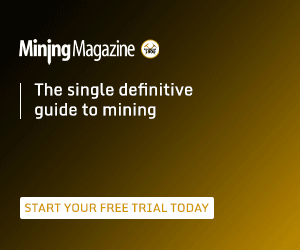A proper assessment should identify problems and present recommendations based on capex, opex and net present value.
Every plant has bottlenecks: there is always something - a stage or piece of a process - that could be improved to increase production. At first, it might seem that everything is working seamlessly and there are no substantial efficiency gains to be made. However, plants always expand as reducing production is not a viable option. The cost per ton goes up in smaller plants and expansions are driven by value per tonne.
Before heading into action, consider basic process factors, such as:
- Is the circuit properly configured? That is, can the process flow be altered to increase production?
- If the bottleneck is removed, what will be the next constraint one encounters and how much benefit can be derived before that constraint limits production?
- Can we get higher equipment availability?
- Can we adjust inputs into the circuit (finer feed/ore blending) to help the mill?
Assess to truly understand your current production efficiency
First, instrumentation must be calibrated, and controls properly tuned, otherwise the reliability of the assessment is at risk. If this is not carried out properly, then uncalibrated instrumentation and controls that are not properly used as well as incomplete historical data may distort results.
One good solution for determining process optimization is a combined control and diagnostic tool such as Metso's OCS 4D. In this Advanced Process Control (APC) tool, we use an approach called "Dynamic Constraint Control". It identifies the current limiting aspect of the plant and adjusts production to try to stay close to that limitation. It also quantifies the amount of time that each potential constraint limits production. Finally, there will be solid data on where to target capital investment and what the expected improvement will be once the constraint has been removed.
It is crucial to keep in mind that the root cause for the bottleneck is not always what it might first seem to be. Poor classification, grinding mill performance or changes in ore characteristics can cause symptoms in a pump that is then considered the bottleneck. Ultimately, none of them is directly related to the pump.
Know your options
There is no single "off the shelf" optimization solution, as the details of each plant's design and its limitations dictate a customized solution. Moreover, market and mine conditions may alter the very goal to be targeted. One plant may push for higher production, while another that is limited by contracts or demand may choose to focus on lower production costs or maximizing net present value. Actions based on the differing goals can be very different.
Optimal operating procedures and the process flow diagram may be determined based on traditional ore sampling and mass balancing followed by simulation and optimization tools to help, for example, in recognizing where adjustments to different components, like ball charge, liners and classifier operation, could be made.
Mine to mill assessments can highlight economical ways to improve capacity by improving blasting techniques or crusher operation, whereas DEM tools can assess liner effects on charge. A data-based process audit can also lead to a range of recommendations for improved automation, better operational practices, such as ore blending, and changes to the flowsheet.
Maximize value
As mentioned previously, all of the above options are dependent on the data and measurement tools being in place and functioning well. If not, the assessment will be incomplete, and the implementation risk will be higher. Potentially, the root cause of the bottleneck will not be identified and upgrades, replacements or other changes in the flowsheet will not deliver the expected results.
Another thing to consider when adding equipment or modifying equipment is the fact that some other element of the process may be nearly at its maximum and limit potential benefits despite the removal of the correct bottleneck.
To make sure that the production increase brings the most value, one really needs to examine how to invest capital. It is safe to say that zero investments result in zero improvement. However, desirable benefits will not necessarily be achieved by simply investing money without considering what the potential effects and secondary bottlenecks may be. Wise and well justified investment is what leads to desirable results.
We have seen cases where production has been driven up with advanced process control in the comminution circuit, but the gain has been minimal because there was not enough capacity to keep up with it. Many times, the SAG mill ball charge is increased to increase hard rock production, but this gain is lost when moving to a softer ore and SAG mill is no longer a constraint. This is not only unproductive, but also detrimental, as the mill wears faster, and higher power is drawn without any associated increase in throughput.
On the other hand, we have also had clients who were able to use the constraints limiting a process to increase pump motor sizes and then enjoyed a substantial production increase based on this relatively inexpensive solution. Directing capital investment intelligently is a formula for success.
WRITER: Jeff McKay, Manager, Expert Systems, Process optimization, Metso

























